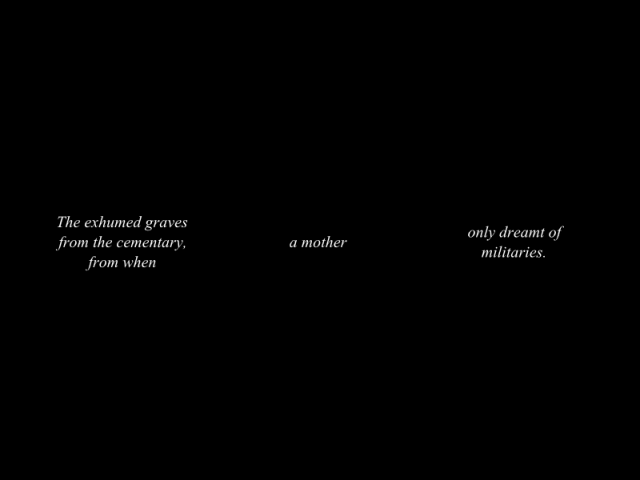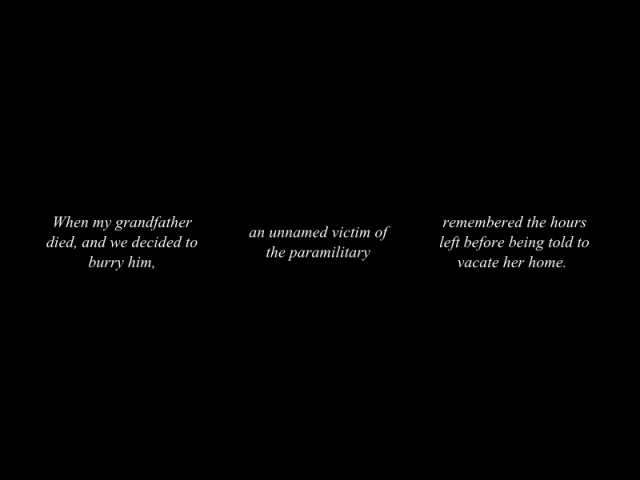The readings made me think about how I never think of time technically or quite literally anymore. Especially once the pandemic started, my perception of time itself has changed. We, as humans, have this temporal agency where we can alter our view of the structure or management of time.
Category: 03
mokka – Meander
While looking at this work, I was reminded of another work from Meandering River is an audiovisual art installation created by onformative and FunkHaus Berlin Sound Chamber. To see an alternative way to create land was very fascinating to me.
sticks-Timekeeping
I found it very interesting from yourcalendricalfallcyis.com that timezones aren’t set in stone, where countries like Samoa made a decision to switch its timezone, and that new timezones are created (Eastern Russia) when the timezone the area is in does not fit.
Another idea that stuck with me was from Graphesis: Visual Forms of Knowledge Production, where Johanna Drucker manifested a perspective on time that states,”Humanistic temporality is broken, discontinuous, partial, fragmented, in its fundamental conception and model” (Drucker). I never viewed time as something that had so many errors and historical mistakes, and sort of just followed it since it is generally seen as an accurate system to structure our entire lives around.
sticks-meander
One of my biggest takeaways from Meander was that many steps, revisions, and trials are necessary to create a successful project. A lot of tinkering is done in his development of the Oxbow Lakes and the Road Maps, where drafts and recreation helped him achieve his final form. His project is a reminder that many great works don’t start out as great works, and that “The network of roads didn’t begin as a network of roads” (Hodgin).
Toad2 – Timekeeping
While we have atomic clocks, the fact there are clocks out there that are not precise and that large portion of human history operated upon an inaccurate time scale sticks with me because it makes me question the historical timeline. This fact raises the question of how this different time scale causes people to experience life differently and perhaps view life to be faster or slower.
gregariosa-meander
This project is beautifully striking. It was interesting to see how its beginning was derived from a single line manipulated by vectors. I was also surprised that the river was made to not overlap by looking for collisions. Such sensitive adjustments make this piece so intricate and real.
Toad2 – Meander
The way Hodgin created natural land plots stood out to me since each land plot had an organic shape while simultaenous being connected. Meader introduced me to the Voronoi fracture was really interesting to me and would like to learn how to use it in future work.
A smaller thing that stood out to me was how Hodgin created a sense of place via naming. For example, Hodgin establishes the believability of his map by simply taking the names of known locations and altering them to create a simultaneous sense of familiarity and unfamiliarity demonstrating a simple solution to creating believability.
gregariosa-timekeeping
From Johanna Drucker’s text, I enjoyed how she identified the different interpretations of time from two schools of thought. Empirically, time is considered as a continuous cycle, whereas in records of human events, time is discrete, variable, and relative. It was interesting that the “humanist approach,” where the concept of time is flexible, is quite similar to Einstein’s revelation that time is relative (as briefly described in the 6-minute YouTube video on the history of timekeeping devices).
(But also, I don’t fully understand Einstein’s theory of relativity, so I’m not sure what the implications I can draw from this finding.)
marimonda – Clock

8:24
This was an experience for me to make, as I went through hundreds of testimonies of victims (or their families) who suffered from the violence from the Colombian military, to the ELN, to the different paramilitary groups, to the FARC and female victims of assault through the different periods of armed conflict. I have done a lot of projects recently on the idea of constructing archives and stories, and something that has been on my mind a lot recently is the lived experiences of victims and the numerical definitions of massacre and collective trauma. So in this project, I created a clock that through the period of ten minutes, displays a unique version of these stories. To be able to view this clock, the left-most side displays the current minute represented by the number of words, the middle column represents the ten’s place digit of the seconds (thus it changes every 10 seconds) and the rightmost column represents the one’s digit.
The hardest part of this piece was trying to find a way of approaching this sensitive topic in a proper and respectful way, I translated a lot of the anecdotes at first quite literally, but many of the stories were violent and incredibly difficult to digest. There is also often a difficulty in trying to describe the violence that exists in Latin America without make it the defining quality of these nations. It often feels like as a Colombian, so many of our conversations are focused on avoiding the armed conflict as a topic, it felt uncomfortable to make this piece but I still made it because it is a very real struggle for many, and for those who live it every day through memories.

4:10-419

10:00
here is an earlier revision! CW: More explicit mentions of sexual assault and violence.
NOTES:
(CW: Mentions of violence)


EDIT: 9/17/2020
I edited the text to be slightly bigger, and added more variation to the statements so that it doesn’t feel as repetitive!
sweetcorn-meander
In reading Robert Hodgin’s writeup on “Meander,” I found a lovely lesson in the importance of documentation. Robert’s documentation not only illustrates his thought process, but also serves as a wonderful statement itself, effectively introducing concepts central to his work and speaking to the choice of medium.